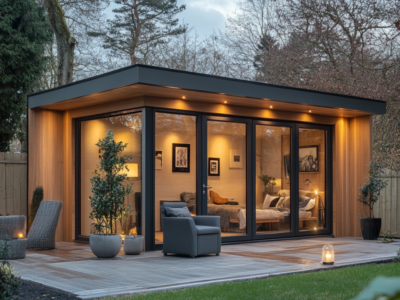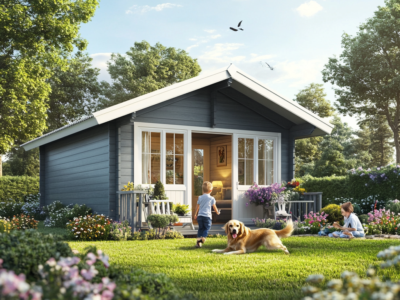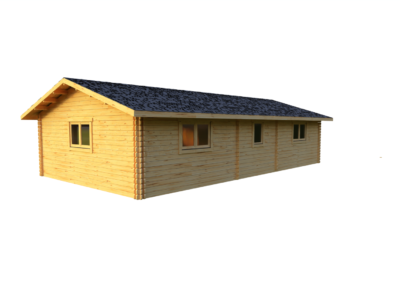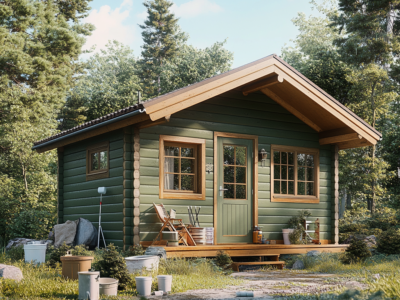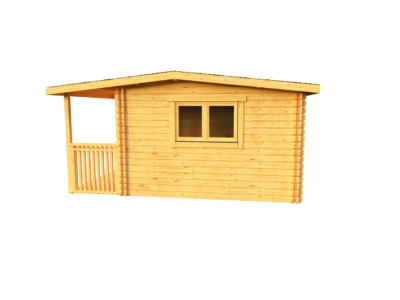Green roofs are living, growing gardens that cover the rooftop of buildings and can range from neat and elegant to wild and creative gardens.
Green roofs can be made more affordable with carpets of hardy sedums – drought-tolerant succulents popular among bees – which provide easy greenery. More elaborate rooftop gardens may host plants as large as trees.
What is a green roof?
Green roofs are areas on building rooftops covered in live vegetation such as shrubs, grasses, mosses and flowers, making it an attractive alternative to conventional asphalt roofing, bitumen roofing or tile roof systems. A green roof has many benefits for improving air quality as well as relieving storm water management burden and lowering energy costs.
Green roofs consist of several fundamental components, including a waterproof membrane, root barrier and drainage layer. Plant material is then planted onto lightweight growth substrate, such as perlite, pumice or clay shale; alternatively it could contain organic compost of less than 5% organic content to avoid excessive export of nutrients and slow plant growth. A coarse gravel ballast may also be added for additional drainage purposes and reduced erosion.
Green roofs generally come in two main varieties: intensive and extensive. An intensive green roof is typically designed for multiple plant species and requires frequent attention from its maintenance team – watering, mulching and fertilizing must take place on an ongoing basis for intensive green roofs to remain lush and healthy. Extensive green roofs require less regular care – inspection, weeding and occasional fertilizing should suffice.
Green roofs use plant life to naturally cool their surrounding area by shading and trapping heat, as well as reduce dust, smog and pollution from urban winds that is dispersed through winds in urban areas. Plants also act as natural filters removing pollutants and toxins from the air, while green roofs help mitigate rainwater runoff into sewer systems by being absorbed by plants so it remains cooler for longer. Green roofs also help ease stress on sewer systems during periods of peak flow by keeping rainwater off buildings by keeping it absorbed by plants rather than running off buildings directly into sewer systems – helping mitigate rainwater runoff into sewer systems through rainwater absorbing plants which then releases it back out over time into sewer systems when peak flow periods occurs reducing stress on sewer systems and alleviating stress on sewer systems during peak flow periods by keeping it absorbing rainwater into storage tanks which then becomes stress free reducing stress on drain systems!
As green roofs continue to increase in popularity, they qualify for numerous tax incentives and rebates. But before embarking on this kind of roofing, it’s crucial that you consult a structural engineer to ensure your roof can withstand the weight of soil and vegetation while being easy to maintain over time. Also make sure that you allocate enough resources for ongoing upkeep if this type of roof becomes part of your plans.
Benefits
Green roofs can help shed owners reduce energy costs while simultaneously keeping the interior cooler during summer and warmer in winter. By absorbing rainwater, they can reduce runoff and possibly eliminate storm drains altogether while providing wildlife a habitat and natural insulation – not to mention making your shed blend in seamlessly with its surroundings!
Maintenance-wise, green roofs can be as hands-off or hands-on as desired; more lush plants require more care. To create the most resilient ecosystem possible and ensure year-round color and interest rather than plants that bloom only during certain times of year (e.g. summertime blooming species), consider mixing grasses and perennial plants together rather than opting for seasonal flowers that only bloom once or twice per year.
Establishing a green roof can be a complicated process that will require, at minimum, high quality waterproofing, root barrier layer, drainage system, filter cloth, lightweight growing medium and plants. You may wish to incorporate solar panel arrays and irrigation systems; most green roofs need regular watering in hot weather as their plants at the apex dry out faster than those towards its base – these should therefore be checked more often for signs of moisture loss.
Installing a green roof requires the expertise of a structural engineer who will not only ensure your existing structure can support any additional weight but will also recommend any modifications which might increase stability and safety of your shed. A flat green roof may be easier to install and maintain compared to one with multiple angles which might require extra stabilization systems for stability.
Once the initial work has been completed and plants planted, it’s wise to mulch the entire area to conserve moisture and protect the soil from wind and sun damage. Hay, wood chips or gravel is often used as mulch; simply make sure it rests atop your growing media. Also take time to ensure the plants on your green roof suit the climate in your region – speak with local nurseries or garden centres about suitable plant choices before selecting ones to use on your roof!
Instalação
Green roofs are an alternative to standard roofing that comprise layers of soil, growing medium, and vegetation that provide shelter from UV radiation, prolonging its life expectancy and providing insulation against heating/cooling costs by decreasing energy requirements for maintaining comfortable temperatures within buildings. Green roofs also help improve air quality by filtering particulate matter out while producing oxygen while absorbing carbon dioxide; creating habitats for wildlife while contributing to urban biodiversity.
Green roof plants create visual interest while stimulating one’s sense of touch, smell and sight. Their variety of foliage colours, texture types and growth habits makes for infinite design possibilities; green roofs can even be integrated with seating structures such as pérgulas or water features to further increase aesthetics and usability of buildings.
As previously discussed, vegetative materials play an integral part in improving long-term roof performance by enabling rainwater to soak into the soil instead of running off into sewers. Furthermore, their use serves as a filter for storm water which helps lessen municipal drainage system load while improving urban runoff quality by absorbing and breaking down harmful chemicals that might pollute.
Green roof installations should not compromise an NDL roofing warranty. To ensure compatibility, engineers or architects should consult with roofing manufacturers during design phase to keep them informed of progress during project implementation so any potential issues don’t hinder warranty coverage.
Garden sheds offer the potential to become both idyllic retreats and productive workspaces, offering both shelter and inspiration. By installing windows and adding decorative trim, windows can help transform it into a place of creativity while overhead utility hooks and storage shelves can free up floor space for essential tools and supplies.
Manutenção
Green roofs need regular care and maintenance in order to be successful, either by their owner or, if applicable, by professional green roof gardeners. Key requirements for success are keeping a healthy plant cover while protecting waterproofing layers below.
Green roofs can be defined as flat or gently sloping areas covered with growing medium and an assortment of plants chosen based on climate, location and site conditions. Plant choices might include hardy sedums or wildflowers – or both. Green roofs can be installed either on new buildings or retrofitted onto existing ones.
Green roofs require irrigation in order to establish vegetation, especially when plugs, seeds or cuttings are being used as planting material. Irrigation systems range from simple hose bibs and irrigators up to intelligent automated systems that use weather forecasts or cistern water levels as triggers to schedule watering sessions automatically.
As well as watering, drainage systems should also be kept clear of debris and sand build-up by regularly sweeping vegetation, collecting trash, and clearing away organic debris from them. A maintenance plan should include inspection and maintenance programs for the growing media, waterproof membrane, and any other components in order to keep everything working efficiently.
Noting the fact that green roofs can add up to 150 pounds per square foot of extra weight can be crucial when considering installing one on an older building, requiring both frame and roof supports to be reviewed and possibly upgraded in order to support it.
Consultation between design phase and project completion with your roofing manufacturer should also be essential, to address any concerns they have about green roof construction and its effect on their No Dollar Limit (NDL) warranty and keep any potential problems from developing into issues later. Green roofs also boast superior fire resistance compared to conventional roofs due to soil construction and their use of plants with low fire hazard characteristics, like succulents.

